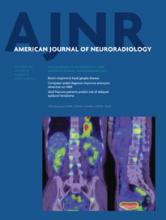Review ArticleReview Articles
Open Access
CFD: Computational Fluid Dynamics or Confounding Factor Dissemination? The Role of Hemodynamics in Intracranial Aneurysm Rupture Risk Assessment
J. Xiang, V.M. Tutino, K.V. Snyder and H. Meng
American Journal of Neuroradiology October 2014, 35 (10) 1849-1857; DOI: https://doi.org/10.3174/ajnr.A3710
J. Xiang
aFrom the Toshiba Stroke and Vascular Research Center (J.X., V.M.T., K.V.S., H.M.)
bDepartments of Neurosurgery (J.X.)
V.M. Tutino
aFrom the Toshiba Stroke and Vascular Research Center (J.X., V.M.T., K.V.S., H.M.)
cBiomedical Engineering (V.M.T.)
K.V. Snyder
aFrom the Toshiba Stroke and Vascular Research Center (J.X., V.M.T., K.V.S., H.M.)
H. Meng
aFrom the Toshiba Stroke and Vascular Research Center (J.X., V.M.T., K.V.S., H.M.)
dMechanical and Aerospace Engineering (H.M.), University at Buffalo, State University of New York, Buffalo, New York.

Submit a Response to This Article
Jump to comment:
No eLetters have been published for this article.
In this issue
American Journal of Neuroradiology
Vol. 35, Issue 10
1 Oct 2014
Advertisement
J. Xiang, V.M. Tutino, K.V. Snyder, H. Meng
CFD: Computational Fluid Dynamics or Confounding Factor Dissemination? The Role of Hemodynamics in Intracranial Aneurysm Rupture Risk Assessment
American Journal of Neuroradiology Oct 2014, 35 (10) 1849-1857; DOI: 10.3174/ajnr.A3710
Jump to section
Related Articles
Cited By...
- Cerebral aneurysm hemodynamics indicative of instability are associated with heterogeneous wall motion measured by amplified MRI
- Flow-based simulation in transverse sinus stenosis pre- and post-stenting: pressure prediction accuracy, hemodynamic complexity, and relationship to pulsatile tinnitus
- Using angiographic parametric imaging-derived radiomics features to predict complications and embolization outcomes of intracranial aneurysms treated by pipeline embolization devices
- Intracranial Aneurysm Wall Displacement Predicts Instability
- Comment on "Blood Flow Mimicking Aneurysmal Wall Enhancement: A Diagnostic Pitfall of Vessel Wall MRI Using the Postcontrast 3D Turbo Spin-Echo MR Imaging Sequence"
- Critical role of angiographic acquisition modality and reconstruction on morphometric and haemodynamic analysis of intracranial aneurysms
- A new combined parameter predicts re-treatment for coil-embolized aneurysms: a computational fluid dynamics multivariable analysis study
- Does the DSA reconstruction kernel affect hemodynamic predictions in intracranial aneurysms? An analysis of geometry and blood flow variations
- Differences in Morphologic and Hemodynamic Characteristics for "PHASES-Based" Intracranial Aneurysm Locations
- Clinical, morphological, and hemodynamic independent characteristic factors for rupture of posterior communicating artery aneurysms
- Hemodynamic characteristics of large unruptured internal carotid artery aneurysms prior to rupture: a case control study
- Hemodynamic-morphological discriminant models for intracranial aneurysm rupture remain stable with increasing sample size
- Hemodynamic Differences in Intracranial Aneurysms before and after Rupture
- Changes of Time-Attenuation Curve Blood Flow Parameters in Patients with and without Carotid Stenosis
- The Computational Fluid Dynamics Rupture Challenge 2013--Phase I: Prediction of Rupture Status in Intracranial Aneurysms
This article has not yet been cited by articles in journals that are participating in Crossref Cited-by Linking.
More in this TOC Section
Similar Articles
Advertisement











